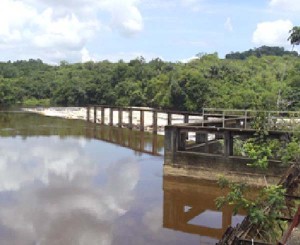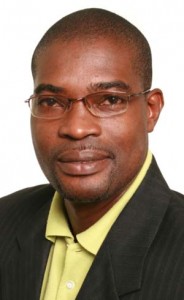Government yesterday said that it remains committed to pursue the development of its own hydroelectric facilities. Five out of 67 possible sites are currently being assessed by the Inter-American Development Bank (IDB) for development. The assessment is expected to be completed by May 2016.
The five sites, according to Minister of Public Infrastructure, David Patterson, are Kamaira, Kumu, Tumatumari, Tiger Hill and Amaila.
The government will be using $80M from the Norway funds that were set aside for renewable energy development.
Amaila Falls was the favored site for a 165-megawatts hydro with the previous administrations of the People’s Progressive Party/Civic heavily pushing for it.
Already roads, costing at least US$40M leading to the site in Region Eight, have been completed.
However, the project stalled a couple of years ago after the previous Opposition, now forming the coalition Government, refused to pass a key piece of legislation pertaining to environment that was critical to the financing of the project. The developer, Sithe Global, announced that it was pulling out.
However, Norway, which has plugging about US$80M in the project, has asked for an independent assessment of the Amaila Falls project.
Critics have been placing final costs up to US$1B.
With regards to the assessments of the five sites, Minister Patterson had this to say: “At the end of this process, we will obviously assess them. However, we will look to use the US$80M in the most acceptable means of renewable energy … but it could be any form of large scale renewable energy – which is the understanding that we have so it’s a process which we are going through, and I think it’s a wise way to go forward.”

The rapids at Tumatumari and remains of the historic Tumatumari Hydro plant which supplied electricity from the late 1950s to the 1980s.
Government is also working with the Government of Brazil and other interested stakeholders in seeking additional funding for the hydro power and renewable energy project that is projected for the Mazaruni area, Region Seven.
“We are moving ahead, and we working through the Ministry of Foreign Affairs continuing discussions with them. There are other individuals who have MOUs. I think Kumu falls, there is a company that has an MOU with us and it remains to develop that falls. Tumatumari, Moco Moco – we are going out for an expression of interest to resuscitate the Moco Moco hydro falls so we haven’t excluded any project. It’s always a question of time and cost,” the Minister explained.
Guyana is heavily dependent on fossil fuel for its energy needs. As a matter of fact, the state-owned Guyana Power and Light Inc. (GPL) is spending between US$70-US$125M annually to import fuel, depending on the world prices.
According to the minister, renewable energy has been identified as a growth industry with Guyana boasting an abundance of wind, sun and water.
Harnessing their potential would be a game changer for Guyana as it is believed that the country has enough capacity to not only satisfy its own energy demands, but to sell excess to its neighbours.
Government is currently negotiating a power-purchase agreement with a private developer for a US$50M-plus wind farm at Hope Beach.
That project is likely to see an additional 25 megawatts of additional power to the national grid.
Local businesses have been complaining that the high cost of power is the single biggest factor inhibiting growth of the manufacturing sector.

